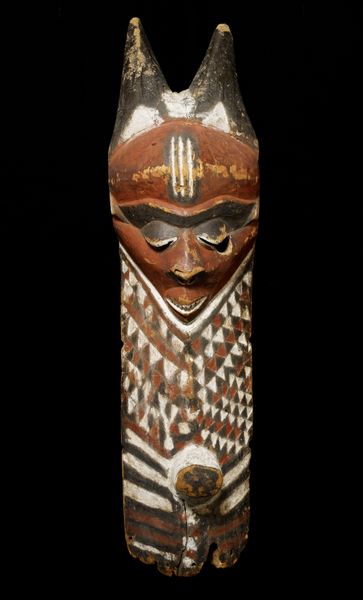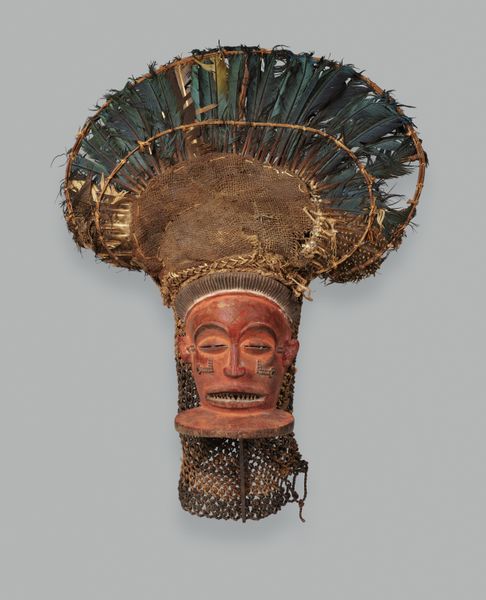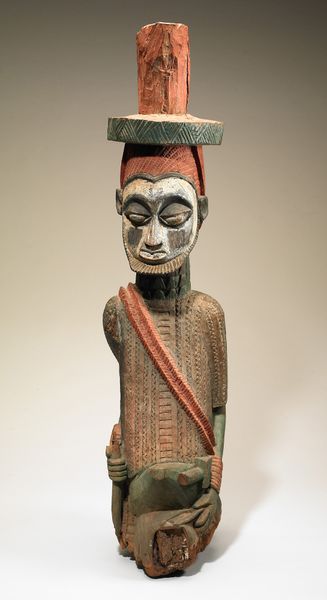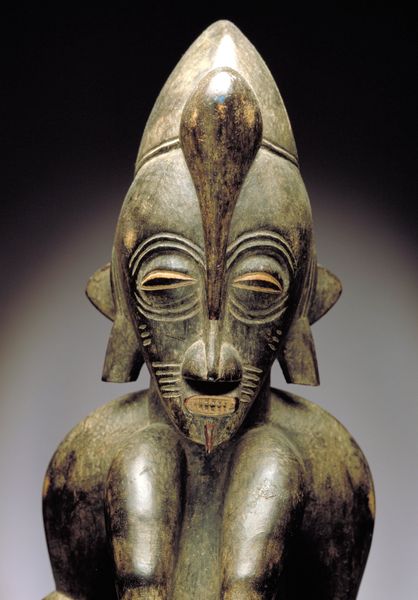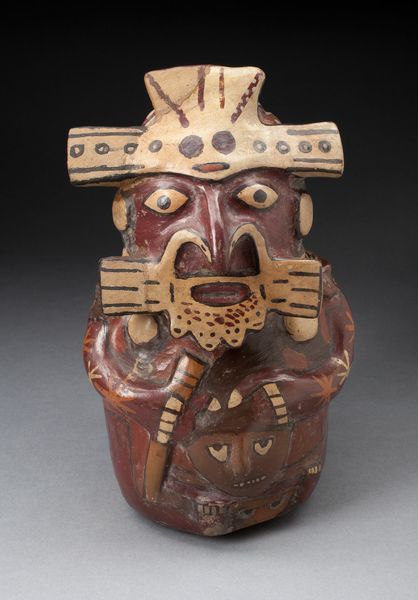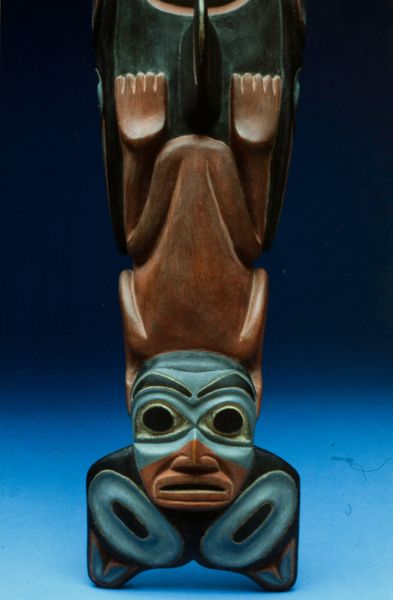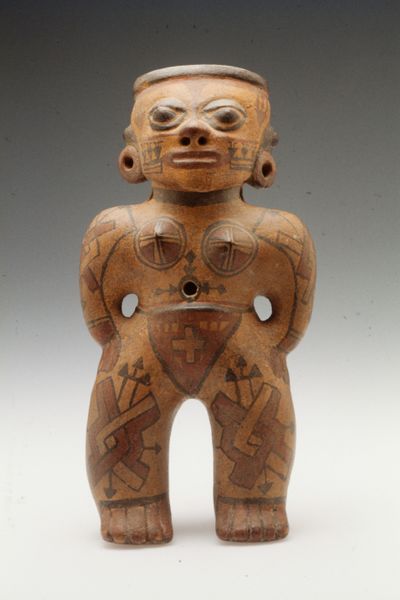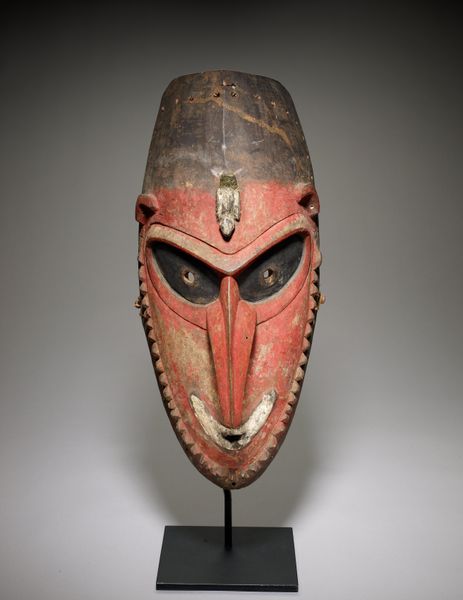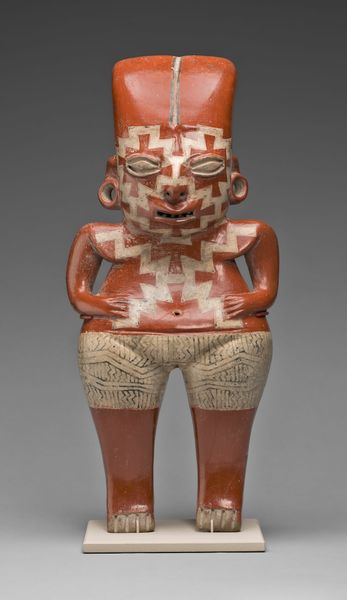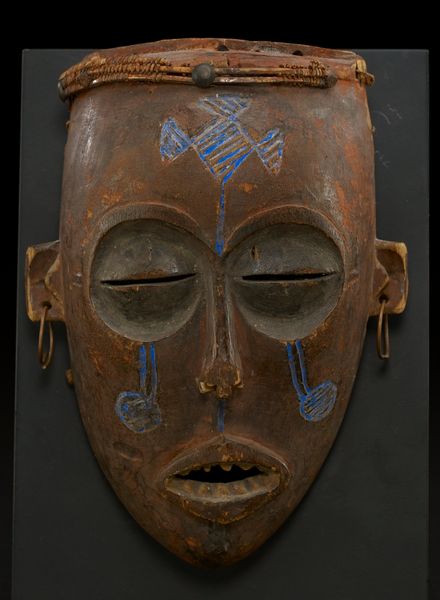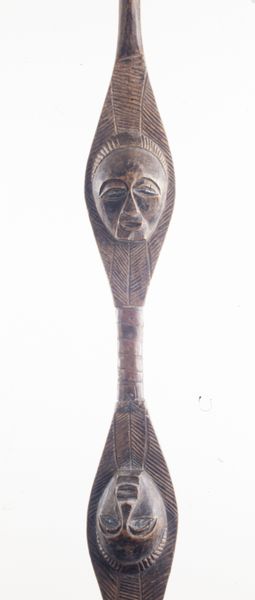
mixed-media, performance, textile
#
portrait
#
art-deco
#
mixed-media
#
performance
#
sculpture
#
textile
#
figuration
#
geometric
#
costume
Copyright: Public domain US
Curator: Here we have Sonia Delaunay's "Costume Design for Cleopatra," created around 1918. It’s a fascinating piece incorporating mixed media, including what appears to be textile and other decorative elements. What are your initial thoughts? Editor: My immediate impression is sensory overload, a controlled riot of color and geometric forms. It feels theatrical, even a bit aggressive in its presentation of femininity and power. There's something undeniably attention-grabbing about this garment. Curator: Absolutely. This was during a pivotal time when Delaunay, alongside her husband Robert, was deeply involved in the Ballets Russes. They pushed the boundaries of abstraction, particularly with simultaneous contrast, to create intensely dynamic visual experiences. It’s important to think of the body, and especially the female body, as a kind of canvas, both celebrated and contested. The gender performance is explicit here. Editor: It makes me wonder about the labor involved. Look at the beadwork, the application of each separate colored element. We should consider the workshop dynamics, too. Were these pieces hand-sewn? What level of skill was required, and by whom? This material presence communicates the intersection between haute couture and a kind of glorified craft production. Curator: Excellent points. Delaunay aimed to integrate art into everyday life, blurring those high/low distinctions you mention. The design isn't simply ornamental; it aims to be lived in, to change the way the wearer moves and is perceived. It's a visual declaration of independence, in some ways. Think about the ancient Egyptian imagery colliding with modernist principles of radical experimentation! Editor: I agree, but I'd also point out a certain dissonance between the futurist aesthetic and what would have still been the prevailing restrictions of stage work and social convention in that era. How radically could this Cleopatra actually perform? There’s material promise and potential, perhaps limited by the confines of its situation. Curator: It’s that tension—the interplay between constraint and liberation—that makes it so compelling, I think. Delaunay challenges us to rethink what clothing, and performance, can signify in relation to female empowerment, especially through a non-western, powerful figure. Editor: Ultimately, examining the materiality of costume, how it functions practically and symbolically, makes us appreciate the multiple meanings interwoven into even a seemingly straightforward visual piece. Curator: Exactly. Delaunay’s vision reminds us that even decorative arts can ignite discussions about gender, power, and the socio-historical circumstances surrounding an artwork's genesis.
Comments
No comments
Be the first to comment and join the conversation on the ultimate creative platform.
